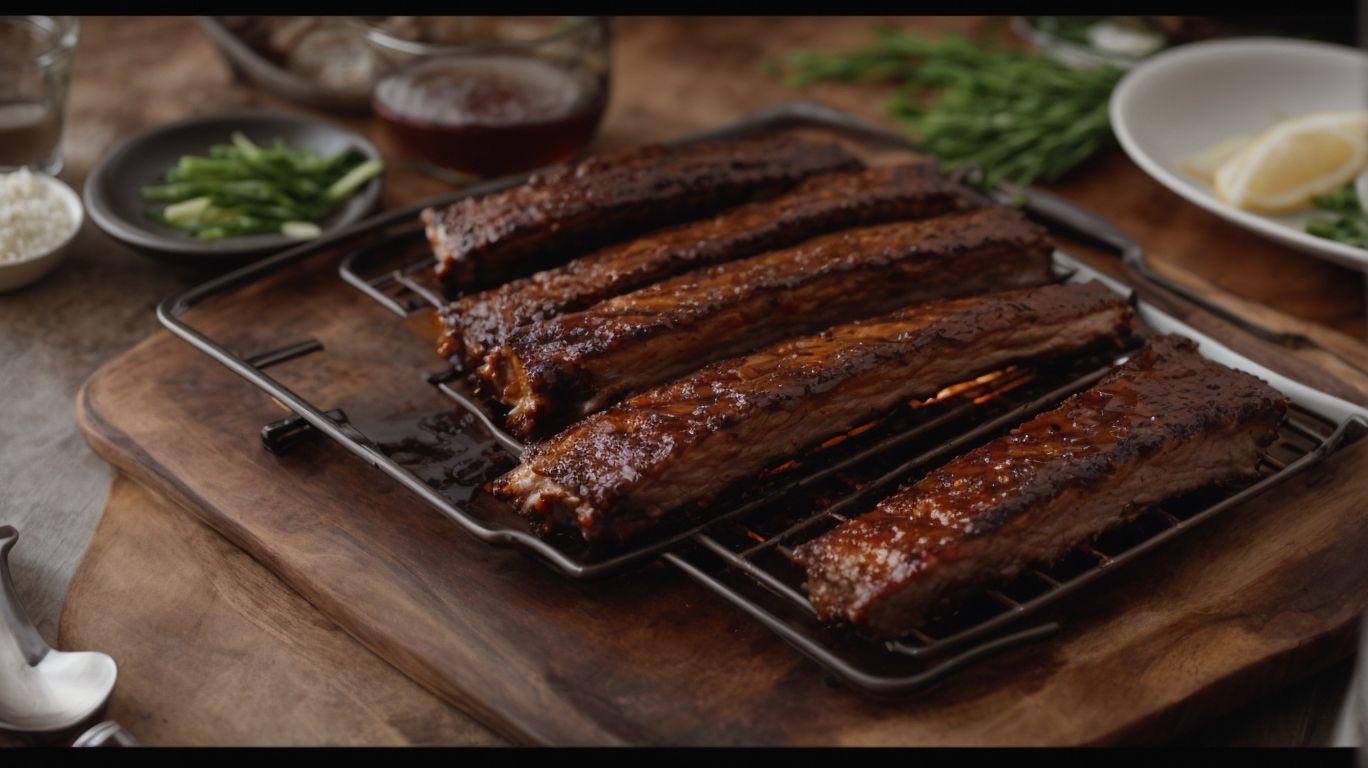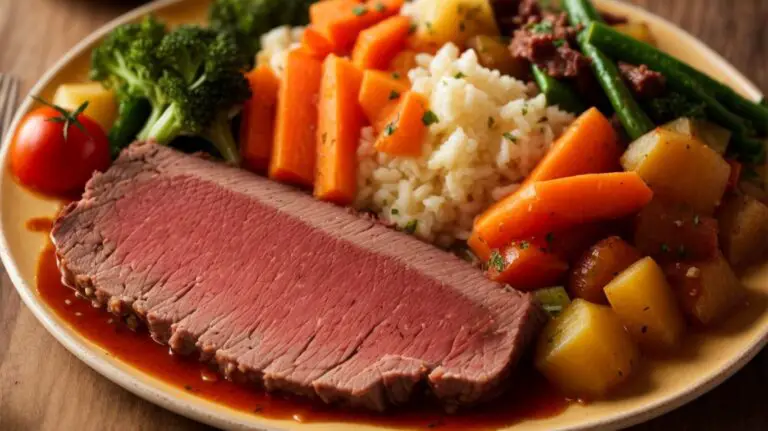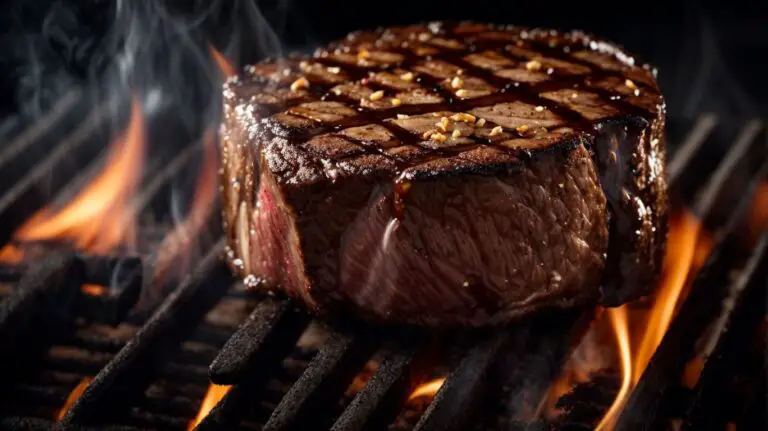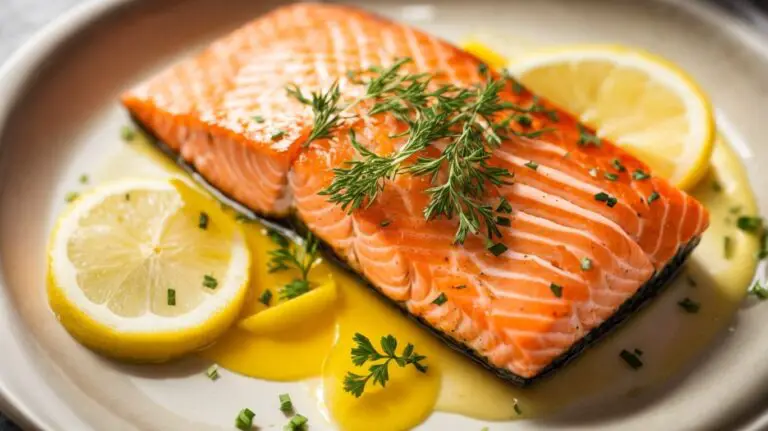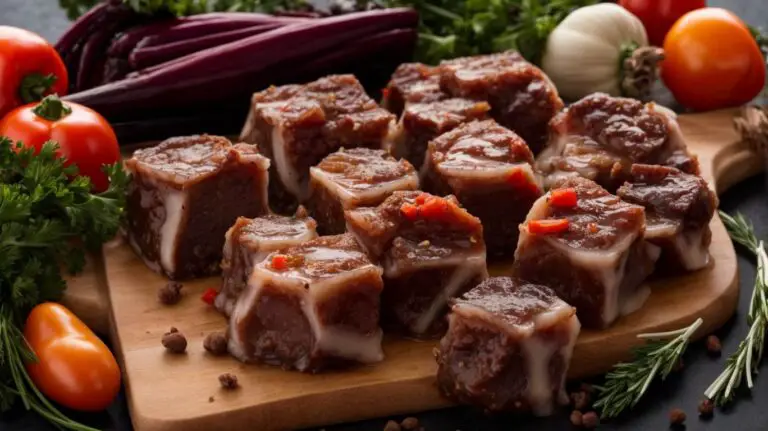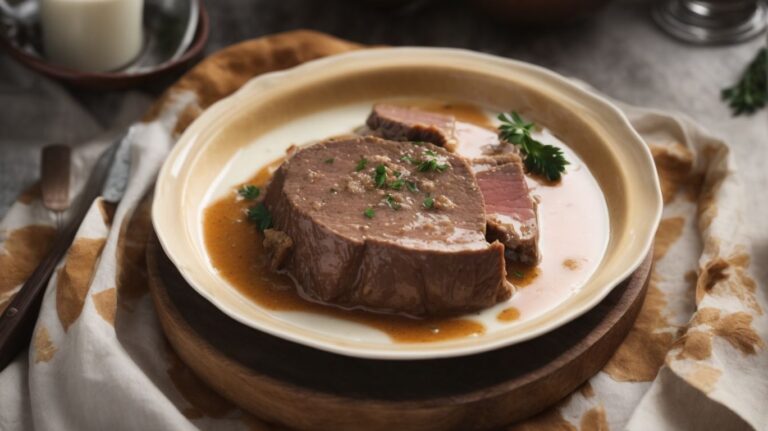How to Cook Oven Ribs?
If you’re craving tender, flavorful ribs but don’t have access to a grill, oven ribs are the perfect solution.
In this comprehensive guide, we’ll explore everything you need to know about preparing, cooking, and serving delicious oven ribs.
From choosing the right type of ribs to selecting the perfect seasonings, we’ll cover it all. So, grab your apron and get ready to impress your family and friends with mouthwatering oven ribs!
Key Takeaways:
What Are Oven Ribs?
Oven ribs refer to ribs that are cooked using the baking method in an oven, resulting in tender and flavorful meat.
This cooking process involves seasoning the ribs with a blend of spices or marinade, then placing them on a baking tray or rack in the oven for slow cooking. The slow, even heat distribution in the oven allows the meat to cook through gently, resulting in a fall-off-the-bone texture and a rich infusion of flavors. One of the advantages of baking ribs in the oven is the convenience it offers, as you can set the timer and let the ribs cook slowly while you attend to other tasks.
Why Cook Ribs in the Oven?
Cooking ribs in the oven offers a convenient and efficient way to achieve succulent and well-cooked meat without the need for constant attention.
One of the key benefits of using the oven to cook ribs is the even and consistent heat distribution throughout the cooking process. This ensures that the ribs are cooked uniformly, resulting in tender meat that falls off the bone. Oven-cooking allows for hands-free preparation after the initial setup, allowing you to tend to other tasks while the meat slowly bakes.
Another advantage of utilizing the oven method is the ability to control the cooking temperature accurately. By setting the oven to a specific temperature, you can achieve precise doneness levels every time, guaranteeing perfectly cooked ribs with minimal effort.
Preparing the Ribs
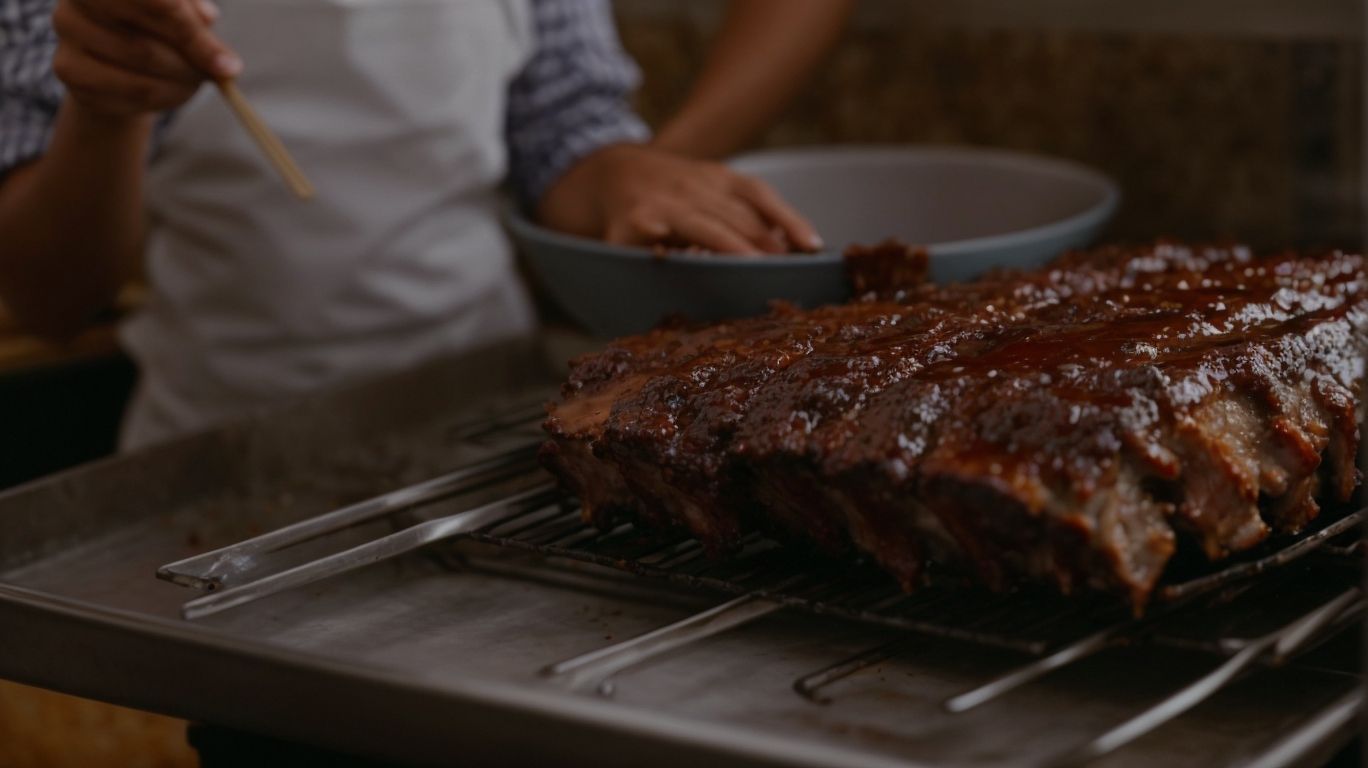
Credits: Poormet.Com – Carl Taylor
Preparing the ribs involves selecting high-quality ingredients and properly trimming the meat to ensure a delicious and tender outcome. Additionally, marinating the ribs can enhance their flavor profile before cooking.
What Type of Ribs to Use?
When preparing oven-baked ribs, baby back ribs are a popular choice due to their tenderness and ideal meat-to-bone ratio.
One of the key characteristics of baby back ribs that make them so suitable for oven cooking is their relatively smaller size compared to other types of ribs, allowing for quicker and more even cooking. The lean meat to abundant juicy flavors ratio in baby back ribs ensures a mouthwatering and satisfying experience for those enjoying them. Using a rack when baking baby back ribs is highly advantageous as it elevates the ribs, allowing air circulation on all sides for more consistent cooking and better caramelization.
How to Trim the Ribs?
Trimming the ribs involves removing the tough membrane on the underside of the meat to enhance tenderness and allow better absorption of seasonings and flavors.
There are several benefits to removing this membrane before cooking. It improves the texture of the meat, making it more tender and juicy. By taking off the membrane, you create pathways for the seasonings and rubs to penetrate the meat evenly, resulting in a more flavorful dish.
To remove the membrane, you can use a paper towel to grip it firmly and peel it off in one piece. This process may seem tedious, but it is well worth the effort as it can significantly impact the outcome of your ribs.
When cooking, removing the membrane allows for better smoke absorption and even cooking throughout, ensuring a delicious end result.
Should You Marinate the Ribs?
Marinating the ribs can infuse them with rich flavors and spices, enhancing the overall taste and tenderness of the meat.
One of the key advantages of marinating ribs is that it allows the flavors to penetrate deep into the meat fibers, ensuring each bite is packed with delicious taste. The marinade acts as a tenderizing agent, breaking down tough connective tissues and making the meat more succulent.
Regarding choosing a marinade, the options are endless. From classic BBQ sauces to Asian-inspired blends, each marinade brings a unique flavor profile to the dish. Experimenting with different marinades can keep your taste buds intrigued.
Spices play a crucial role in enhancing the flavor of marinated ribs. Ingredients such as paprika, garlic, cumin, and herbs like thyme or rosemary add layers of complexity to the taste.
Cooking the Ribs
Achieving perfectly cooked oven-baked ribs requires precise temperature control, the right cooking duration, and considerations on whether to wrap the ribs during the process.
What Temperature to Set the Oven?
Setting the oven to the correct temperature, typically around 275-300°F, ensures slow and even cooking of the ribs, resulting in tender meat.
When cooking ribs, temperature control is crucial for achieving the desired outcome. Maintaining the ideal temperature range helps the meat to cook slowly, allowing the flavors to develop fully and ensuring that the ribs remain juicy and flavorful. Without precise temperature regulation in the oven, the risk of overcooking or undercooking the ribs increases significantly, leading to tough or dry meat. By following the recommended temperature guidelines, you can enjoy ribs that are perfectly cooked, with a delicious, melt-in-your-mouth texture.
How Long to Cook the Ribs?
The cooking duration for oven-baked ribs varies based on the specific method used, but generally ranges from 2 to 3 hours for optimal tenderness.
For example, if you are employing the low and slow method, where the ribs are cooked at a lower temperature for a longer period, you might need to bake them for closer to 3 hours to achieve that fall-off-the-bone texture. On the other hand, if you opt for a higher temperature and a shorter cooking time, such as the 2-hour mark, you will likely get a slightly firmer bite but with a caramelized exterior.
Should You Wrap the Ribs?
Wrapping the ribs in foil during the cooking process can help retain moisture and tenderness, especially during the initial low and slow cooking phase.
When the ribs are exposed directly to heat, they can easily dry out, leading to tough and chewy meat. By wrapping them in foil, you create a barrier that traps the natural juices and flavors of the ribs, resulting in a more succulent and flavorful dish. It also helps regulate the temperature around the ribs, ensuring they cook evenly.
In addition, the foil acts as an insulator, preventing excessive moisture loss and allowing the ribs to tenderize more effectively. This method is particularly useful for tougher cuts of meat that require longer cooking times. The foil helps the ribs reach that ideal level of tenderness without risking them becoming dry or overcooked.
Knowing when to wrap and unwrap the ribs is crucial for achieving the perfect balance of tenderness and flavor. Typically, you would wrap the ribs in foil after the initial searing or smoking phase to lock in moisture. As the cooking progresses, you may unwrap the foil to allow the ribs to develop a desirable bark or crust on the outside while still benefiting from the retained moisture inside. This technique ensures that the ribs remain juicy, tender, and full of smoky goodness.
Adding Flavors to the Ribs
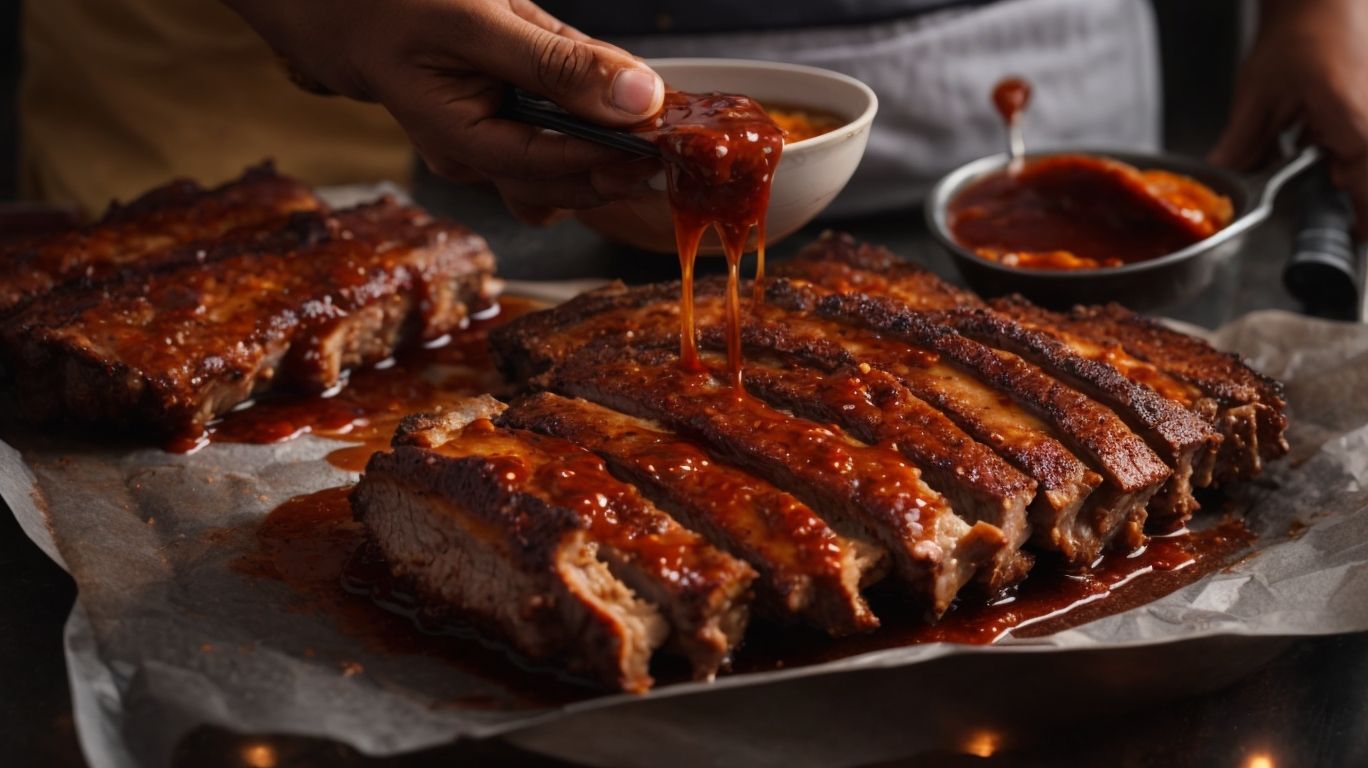
Credits: Poormet.Com – Jerry Nguyen
Enhancing the flavor of oven-baked ribs involves the use of aromatic seasonings, homemade BBQ sauces, and creative spice blends to create a memorable dining experience.
What Are Some Popular Rib Seasonings?
Popular rib seasonings include a blend of garlic powder, black pepper, paprika, mustard, cayenne, and other spices that create a harmonious mix of flavors.
Garlic powder adds a robust earthiness to the ribs, enhancing their depth of flavor.
Black pepper contributes a hint of spiciness that balances the other flavors and adds a subtle kick to each bite.
Paprika brings a smoky sweetness to the dish, creating a rich and savory undertone.
Mustard adds a tangy zing that cuts through the richness of the meat, providing a refreshing contrast.
Cayenne pepper delivers a fiery heat that ignites the taste buds and leaves a lingering warmth on the palate.
How to Make a Homemade BBQ Sauce?
Crafting a homemade BBQ sauce for ribs involves combining ingredients like ketchup, brown sugar, apple cider vinegar, Worcestershire sauce, and molasses to achieve a sweet and tangy flavor profile.
Start by mixing 1 cup ketchup, 1/2 cup brown sugar, 1/4 cup apple cider vinegar, 2 tablespoons Worcestershire sauce, and 2 tablespoons molasses in a saucepan over medium heat.
- Let the mixture simmer for around 10-15 minutes, stirring occasionally to ensure the sugar dissolves and flavors meld.
- For a sweeter profile, you can increase the brown sugar slightly, or for a more tangy kick, add a dash more of apple cider vinegar.
- Balance is key when creating BBQ sauce for ribs, so taste along the way and adjust the sweetness and tanginess to your preference.
What Are Some Alternative Flavors for Ribs?
Exploring alternative flavors for ribs can lead to unique culinary experiences, such as spicy rubs, citrus-infused marinades, or savory glazes that offer a departure from traditional BBQ tastes.
Regarding spicing up your ribs, think beyond the usual seasoning blends. Consider a blend of smoked paprika and brown sugar for a sweet and smoky profile, or a zesty combination of lemon, garlic, and thyme for a refreshing twist. For those who crave heat, a touch of cayenne pepper or chili powder can add a fiery kick to your ribs.
Experimenting with unique flavor pairings can elevate your dining experience to new heights. Try mixing soy sauce and ginger for an Asian-inspired flavor, or combine honey and chipotle for a sweet and spicy sensation. Don’t be afraid to get creative in the kitchen – a sprinkle of coffee grounds or a dash of cocoa powder can add depth and richness to your rib dishes.
Serving and Enjoying the Ribs
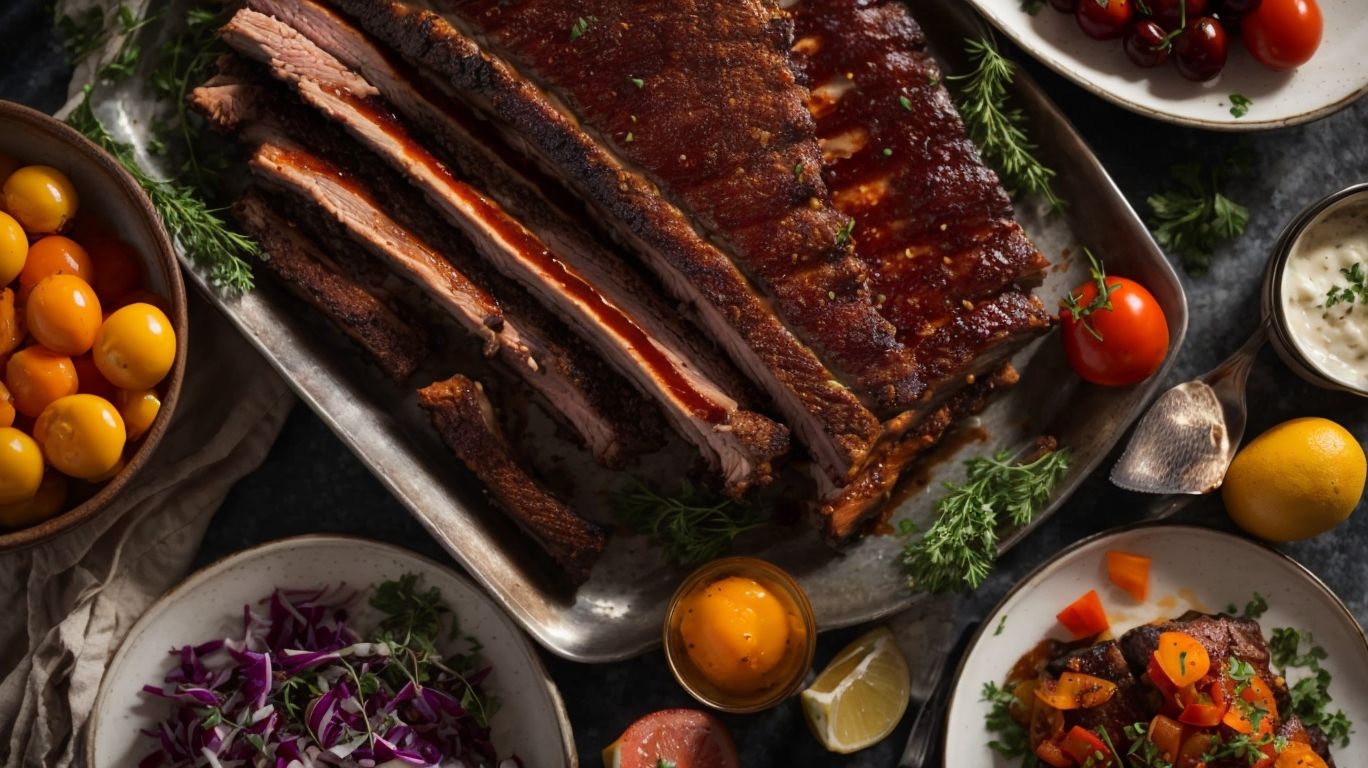
Credits: Poormet.Com – Christopher Adams
Serving and enjoying oven-baked ribs involves proper cutting techniques, pairing them with complimentary side dishes, and knowing how to store leftover ribs for future indulgence.
How to Properly Cut the Ribs?
Properly cutting ribs involves identifying the bone structure, using a sharp knife to separate individual portions, and presenting them in an appealing manner for serving.
Regarding identifying the bone structure, understanding the anatomy of the ribs is crucial. The main types of ribs are baby back ribs and spare ribs, each with distinct characteristics. Baby back ribs come from the back of the pig and are shorter and curved, while spare ribs are lower on the side and are longer and straighter.
Cutting correctly along the bones ensures maximum meat retention and flavor. Once the ribs are properly cut, portioning them into individual servings enhances the overall dining experience.
- For an elegant presentation, consider arranging the ribs on a platter in a cascading fashion or neatly stacked for a more rustic feel.
- Utilizing a barbecue sauce or dry rub can complement the flavors and add an extra layer of deliciousness.
Remember, a perfectly cut rack of ribs not only looks impressive but also showcases your culinary skills to delight your guests.
What Are Some Side Dishes That Go Well with Ribs?
Side dishes that pair well with ribs include classic options like coleslaw, cornbread, and baked beans, as well as creative choices such as grilled vegetables or loaded potato skins.
Regarding coleslaw, its refreshing crunch and tangy dressing offer a contrast to the rich and savory flavor of ribs.
Cornbread adds a touch of sweetness that balances the smoky notes of the meat perfectly. Baked beans, with their hearty and slightly sweet sauce, provide a comforting complement to the meal.
For a lighter option, consider serving grilled vegetables alongside your ribs. The charred flavors and natural sweetness of the veggies can enhance the overall dining experience.
On the other hand, indulging in loaded potato skins brings a creamy and savory element to the table, creating a satisfying meal.
How to Store Leftover Ribs?
Storing leftover ribs properly involves wrapping them in foil or an airtight container, refrigerating them promptly, and reheating them gently to maintain their flavor and tenderness.
To keep the ribs fresh and safe for consumption, it’s crucial to store them at the right temperature. The refrigerator should be set to 40°F or below to prevent bacteria growth on the leftover meat.
When reheating leftovers, avoid using high temperatures that could dry out the meat. Instead, consider using methods like low and slow reheating in the oven or gently warming them in a saucepan with a bit of liquid to help retain moisture.

